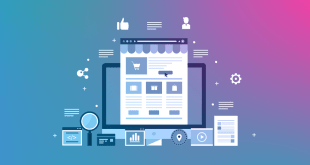In the digital realm of 2023, user experience (UX) holds the key to online success. Website owners and marketers are in a constant pursuit of improving their websites to meet users’ evolving demands. Enter Google Analytics – a powerful platform that provides insights into user behavior, allowing businesses to make data-driven decisions. In this blog, we delve into how Google Analytics enhances user experience and navigate the latest UX trends to stay competitive.
The Evolution of Google Analytics
Google Analytics has come a long way since its inception. Originally launched in 2005, it has evolved into a comprehensive web analytics tool. With continuous updates and features added over the years, it remains a crucial asset for businesses seeking to understand their audience better.
Unraveling User Behavior
Understanding user behavior is fundamental to improving user experience. Google Analytics offers valuable data on user interactions, click-through rates, bounce rates, and more. These insights help identify pain points and opportunities for optimization.
The Power of Real-time Analytics
In 2023, real-time data is a game-changer. Google Analytics now provides real-time reports, allowing website owners to monitor user activity as it happens. This empowers businesses to respond promptly to emerging trends and issues.
Leveraging Google Analytics for Personalization
Personalized experiences resonate with users, fostering stronger connections. Google Analytics enables website owners to segment their audience based on various criteria, leading to tailored content and targeted marketing campaigns.
The Rise of Mobile Analytics
Mobile usage continues to grow, and optimizing mobile experiences is critical. Google Analytics provides mobile-specific reports, offering insights into mobile user behavior and areas for improvement.
Mastering Conversion Tracking
Conversion tracking is the cornerstone of success for online businesses. Google Analytics’ conversion tracking features help identify high-performing content, landing pages, and marketing channels, leading to better ROI.
Navigating UX Design Trends
User expectations for website design change rapidly. Google Analytics assists in recognizing emerging UX trends, such as dark mode, voice search, and interactive elements, ensuring websites remain visually appealing and user-friendly.
A/B Testing for Optimization
To continually improve user experience, A/B testing plays a vital role. Google Analytics allows businesses to test different website variations, identifying which design or content resonates best with their audience.
Accessibility and Inclusivity in UX
Inclusivity is a core principle in UX design. Google Analytics data can reveal potential accessibility issues, such as high bounce rates on certain pages, prompting businesses to make their websites more inclusive.
Preparing for Voice Search
Voice search is revolutionizing how users interact with the internet. Google Analytics data helps track the rise of voice search on websites and supports the optimization of content to cater to voice-driven queries.
Final Words
In 2023, Google Analytics is an indispensable tool for businesses aiming to enhance user experience. By analyzing user behavior, leveraging real-time insights, and staying ahead of UX trends, website owners can create exceptional digital journeys for their audience. Embracing Google Analytics enables businesses to achieve sustainable growth and build long-lasting connections with their users.
Commonly Asked Questions:
1. How can Google Analytics improve my website’s user experience?
Google Analytics provides valuable data on user behavior, allowing businesses to identify areas for improvement and optimize their websites to meet user expectations effectively.
2. What are the latest UX design trends to watch out for in 2023?
In 2023, UX design trends include dark mode, voice search integration, interactive elements, and a focus on accessibility and inclusivity.
3. How does real-time analytics benefit my business?
Real-time analytics allow businesses to monitor user activity as it happens, enabling quick responses to emerging trends, issues, and opportunities for engagement.
4. How can I leverage A/B testing for UX optimization?
A/B testing in Google Analytics lets you test different website variations to identify the most effective design and content, ultimately leading to an improved user experience.
5. Why is mobile analytics important for my website’s success?
With mobile usage on the rise, mobile analytics help you understand how users interact with your site on mobile devices, ensuring a seamless and engaging mobile experience.
 webfily
webfily



